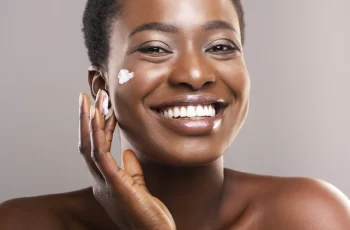
9 Tips for Treating Hyperpigmentation on Your Knees, Straight from a Dermatologist
Have you ever slipped on your shorts while working out and noticed that the skin on your knees is darker than the rest of your legs?
It may look patchy or cover the entire knee area. This darkening of the skin (also known as hyperpigmentation) is common and can have a variety of causes, such as: rashes, sun exposure, illness, blue light, or even hormonal changes. 1
Hyperpigmentation on the knees is usually harmless, but many people still want to get rid of it. With expert advice from board-certified dermatologists Jennifer Baron, MD, and Azadeh Shirazi, MD, we break down everything you need to know about dark skin on your knees—from causes to treatments.
What causes dark skin on your knees?
Shirazi and Baron tell us that people can develop dark skin on their knees for a variety of reasons. The most common causes include friction, chafing, pressure, dead skin cell buildup, sun exposure, genetics, eczema, or other skin conditions.
Shirazi explains that increased melanin production is a common cause of dark knees, especially in people with darker skin tones.
Hyperpigmentation on your knees can also be caused by less common causes, such as burns, reactions to medications or chemicals, inflammation, infection, and vitamin B12 or folic acid deficiencies, experts say.
How to Treat Hyperpigmentation on Your Knees
If you want to treat dark skin on your knees, dermatologists recommend the following:
01 Starting in 2009
Determine What’s Going On
In order to find the best, safest treatment for your specific situation, it’s important to take some time to figure out what’s causing your skin to darken. Treatments vary depending on the cause, so this step is important.
02 Starting in 2009
Protect Your Skin
“If friction is the main issue, a good way to lighten your skin is to protect your knees from trauma using a physical barrier like clothing or knee pads,” Barron says. Avoiding friction and pressure on your knees is helpful because it reduces the buildup of skin cells and darkening of the skin, explains Shirazi.
03 Starting in 2009
Use an Alpha or Beta Hydroxy Acid
“When your skin is repeatedly damaged over weeks or months, even with just pressure or minor friction, the epidermis works to strengthen its barrier function by overproducing and retaining its surface cells,” Barron says. “In this overactive state, melanin-producing cells also go into overdrive.”
For this type of dark skin that’s been damaged and thickened for a long time, alpha or beta hydroxy acids, such as glycolic acid, can help dissolve dead cells, Baron says. Powerful retinol can help restore skin cell turnover to healthy, normal levels.
Shirazi recommends using a medicated spray, such as AziMD’s ONE ($38), which contains glycolic and salicylic acids to lighten pigmentation and remove skin buildup.
04 Starting in 2009
Moisturizer
Keeping your skin hydrated with rich skin emollients like lanolin and plant oils is a good way to treat darkened knees from friction, Baron says. Additionally, moisturizing with sunscreen can help prevent your skin from producing more melanin, Shirazi says.
05 Starting in 2009
Using prescription hydrocortisone
“Sometimes, a short-term application of a prescription cortisone ointment may be necessary to break the cycle of damage and inflammation,” Baron says. “It should be noted that cortisone preparations can thin the skin, cause poor wound healing, and over-lighten the skin if used carelessly.”
06 Starting in 2009
Try a tyrosinase inhibitor
Tyrosinase is an enzyme that plays an important role in the production of melanin, which gives skin its color. Some skin care products contain tyrosinase inhibitors to treat and prevent hyperpigmentation and even skin tone. 2
Skin care products containing tyrosinase inhibitors (such as hydroquinone, azelaic acid, kojic acid, arbutin, and vitamin C) can help lighten discoloration and pigmentation, says Shirazi.
07 Starting in 2009
Avoid scrubbing
As counterintuitive as it sounds, scrubbing your knees is not a good idea. “The worst way to reverse skin darkening is to scrub with sand, metal files or pumice stones, or use exfoliants that contain granular materials,” says Barron. “It just makes the injury worse and forces your skin to grow thicker and darker.”
08 Starting in 2009
Be careful with whitening creams
In some cases, using hydroquinone creams may not be a good idea, either. Hydroquinone is a compound that reduces the activity of an enzyme involved in melanin production.
Products containing hydroquinone are often used to lighten dark areas of the skin, but there is some controversy over whether the compound has harmful side effects.
Cosmetics containing hydroquinone have been banned in the European Union for more than 20 years due to mercury contamination. In the United States, however, prescription whitening products containing hydroquinone are FDA-approved. 3
“Using hydroquinone on the skin continuously for more than two months can cause dark deposits to form on the skin,” Barron says, adding that this risk can be eliminated by using a daily treatment every two months and taking a two-week break.
She recommends talking to a dermatologist, who can refer you to a pharmacy or manufacturer with responsible standards to avoid products that may be contaminated with mercury.
09 Starting in 2009
Avoid hydrogen peroxide
“Avoid hydrogen peroxide,” says Shiraz. “As a bleaching agent, it damages skin cells and eventually causes inflammation, which can exacerbate hyperpigmentation.”
When to see a doctor
In most cases, hyperpigmentation on your knees is harmless. But if you’re concerned about darkening of your skin, see a board-certified dermatologist. “Some conditions can cause significant damage that goes unnoticed initially and manifests as patches or darkening of the skin,” Barron says.Even a condition like melasma—which isn’t life-threatening, but can be difficult to treat—requires a dermatologist’s extensive knowledge and treatment options, Barron explains.


